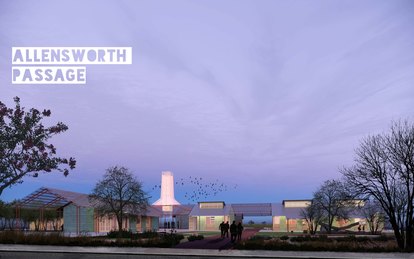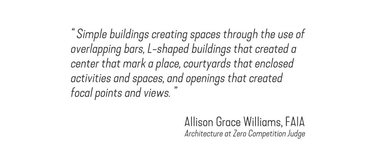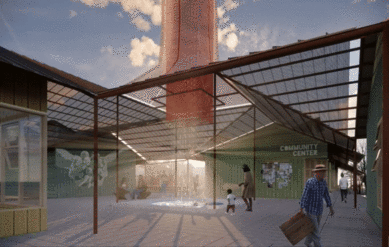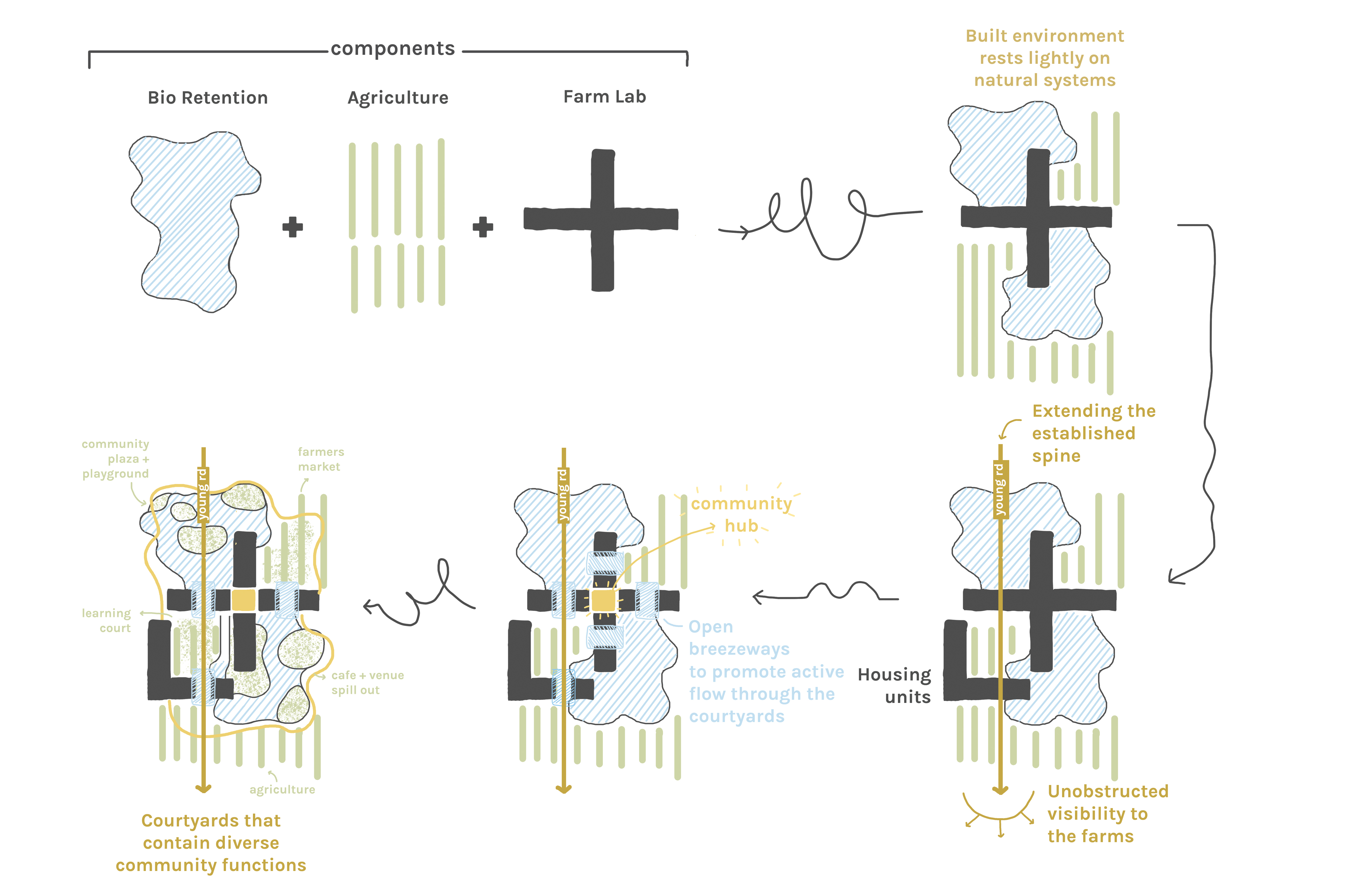The Town that Refuses to Die Deserves to Thrive: Designing for Justice and Decarbonization in Allensworth, CA

About Allensworth and the Competition
As part of the interdisciplinary team that won the Architecture at Zero 2023 competition, we were inspired by the design challenge it posed. The prompt for this year’s competition was to design an agricultural center and housing for farm students in historic Allensworth, California, located north of Bakersfield. Established by Colonel Allen Allensworth in 1908, the town was the first in California to be founded, financed and governed by African Americans. While this agricultural community initially thrived, racially motivated decisions to relocate the rail line and divert regional water supplies led to a century of environmental hardships and economic struggles that are being redressed.
The team’s design solution, called “Allensworth Passage,” not only addressed the decarbonization and resiliency requirements of the competition brief but also prioritized placemaking and design justice.
Addressing a History of Injustice
To address equity for this project, we must address the many inequities this community has and continues to face.
In tackling food insecurity, we envision a space where local farmers are able to allocate and distribute part of their produce yield back to the community. The proposed farmer's market and cafe helps keep some of the food being produced on these neighboring farms at the local level and services the immediate communities who currently don't have access to fresh healthy food.
In addressing water scarcity, we envision not only capturing stormwater, but also treating water on site to ensure clean water can be readily sourced and accessed.
Earlier this year the town faced historic, disastrous flooding. To address the issue of flooding, the site design redirects on-site stormwater, recharges the ground water, and raises the buildings on a plinth to keep built environments dry and safe. These spaces can be used to shelter displaced community members when their homes have been flooded and provide options to people who don't have the means to quickly relocate to safer conditions.
When extreme heat leads to power outages and leaves vulnerable populations without places to cool down, we envision a safe haven that provides a cooling center for the community. We designed the buildings with large overhangs, and conditioned spaces for all the enclosed areas.
To address the lack of access to safe green space and play areas, we envision a site filled with shaded public courtyards with playgrounds and places to gather for the community.
In facing economic uncertainty, we propose programs that create diverse job opportunities and promotes the entrepreneurial spirit Colonel Allensworth founded this town on. The programming supports renting out venue space, providing art exhibition space, hosting farmer's markets, and providing jobs in tourism and hospitality industries. The teaching labs can host visiting educators and researchers and provide internet accessibility to a community that often lacks access to connectivity.
Designing for Placemaking
The team studied the historic buildings in Colonel Allensworth State Historic Park and was inspired by the historical and cultural significance of porches. We used porches in our design to blur the boundaries between the enclosed rooms and outdoor courtyards. The design celebrates the idea that agricultural education doesn’t have to remain within the walls of a room and that the classroom is as much outdoors as it is indoors. The team also referenced the existing buildings' use of color and materials. Incorporating these tactile elements of the existing landmarks into the submission makes it feel like this new construction belongs within the existing fabric of historic Allensworth.
The design team placed the buildings in such a way to establish a streetscape off Avenue 32 and a destination point at Young Road. At the intersection of the two axes of the buildings is the Community hub at the heart of the project, where community events would be held around the fog catcher. The fog catcher became a beacon in the agricultural landscape and a celebratory gesture of capturing and showcasing water onsite. The movement of water is an important design feature in itself. From how the water sheds off the roofs, to how it’s collected in the bioretention systems and ultimately treated to be used onsite, the design team wanted to highlight to students and visitors alike how water moves throughout and interacts with the site.
A lot of attention was placed on the landscape and site design in curating an experience for visitors. Breezeways were placed as permeable hallways for daylight and breeze, provide walls to display art, history, and achievements, as well as frame views to other courtyards and focal points. Since the site is so expansive, scalable experiences were created by breaking down the large site into smaller points of interest and opportunities for art and learning.
Despite the many injustices Allensworth has had to face since its founding, the community has continuously pulled together to rise above the challenges, giving Allensworth its tagline as “the town that refuses to die.” Our design solution aspires to build on this foundation of self-sufficiency and provide a place that fosters community resilience, supports farming innovation and sustainable practices, and celebrates the cultural and historical impact of Allensworth, so that this community will not just continue to survive, but thrive for many future generations.
View the final Architecture at Zero 2023 submission here.




